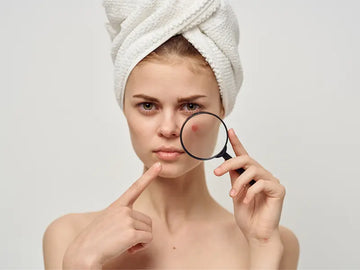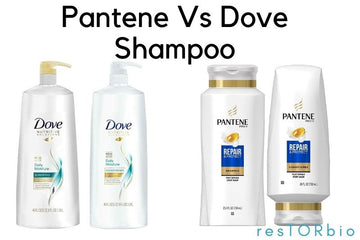
The skincare industry often mentions two essential terms: skin cycling and purging.
Skin cycling is the natural process of skin cell turnover, where new cells are produced, replacing old ones to keep the skin rejuvenated.
According to Dr. Deanne Mraz Robinson, a board-certified dermatologist, purging refers to a temporary breakout caused by new skincare products that accelerate cell turnover. As we explore these concepts, we'll uncover their significance in achieving optimal skincare results.
Can Skin Cycling Cause Purging?
Yes, it is indeed possible for skin cycling to cause purging, especially when new or active ingredients are introduced into your skincare routine.
The acceleration of the four night skin cycling process by these products can bring underlying impurities to the surface faster, leading to what is known as a purge.
The Connection Between Skin Cycling and Purging
Understanding how skin cycling can lead to purging involves delving into the scientific evidence supporting this connection.
Certain skincare ingredients known to increase cell turnover, such as retinoids, alpha-hydroxy acids (AHAs), and beta-hydroxy acids (BHAs), have been associated with skin purging.
Studies have shown that retinoids, a derivative of vitamin A, work by binding to retinoic acid receptors in the skin, normalizing the life cycle of skin cells. This speeds up the shedding of dead skin cells and brings about purging.
Similarly, AHAs exfoliate the skin's surface, unclogging pores and promoting the shedding of dead skin cells, which can also trigger purging.
While purging is a temporary side effect, it is crucial to use these active ingredients responsibly and in moderation to achieve the desired results without causing undue irritation.
Skin purging Vs. Skin Breakouts
This table gives all the things about skin purging and breakouts in short.
| Aspect | Skin Purging | Skin Breakouts |
| Cause | Occurs when using new skincare products that increase cell turnover. | This can happen due to various factors such as hormones, diet, or stress. |
| Duration | Temporary, lasting a few weeks. | Can vary in duration and may persist if not properly treated. |
| Appearance | Small, whiteheads or blackheads in areas where you typically break out. | Larger, more inflamed pimples can appear anywhere on the face. |
| Triggers | Active ingredients like retinoids, AHAs, BHAs, and chemical exfoliants. | Hormonal imbalances, clogged pores, bacteria, and inflammation. |
| Sign of Efficacy | Indicates that the product is working effectively and promoting skin renewal. | Not necessarily a sign of the product's effectiveness; may need adjustments. |
| Treatment | Continue using the products causing purging, as it's a temporary phase. | May require different treatments such as spot treatments or medicated creams. |
| Use gentle cleansers and moisturizers to soothe the skin during purging. | Avoid picking or squeezing the pimples to prevent scarring and infection. | |
| Long-term Care | Purging should subside as the skin adjusts to the new products. | Focus on a consistent skincare routine, tailored to your skin's needs and type. |
The below infographic shows the visible difference between the skin breakouts and the purging.

The Role of Active Ingredients
Active ingredients you may use with your skin cycling products such as retinoids, AHAs, and BHAs. They are knowing as to accelerate skin cell turnover. Retinoids, for instance, work by binding to retinoic acid receptors in the skin, which helps to normalize the life cycle of skin cells.
This can lead to an increase in the rate at which dead skin cells are shed and replaced with new ones, potentially leading to a purging effect.
AHAs and BHAs work by exfoliating the skin and promoting the shedding of dead skin cells. This can also accelerate skin cell turnover and potentially lead to purging.
How to Tell if Your Skin is Purging or Breaking Out?
If you are experiencing a breakout after starting a new skincare routine, you should know whether it's a result of purging or a regular breakout. Here are some key differences to help you identify what's happening:
Location of Breakouts:
Purging usually occurs in areas where you typically break out, while regular breakouts can appear anywhere on your face.
Type of Breakouts:
Purging is usually characterized by small, whiteheads or blackheads. Regular breakouts, on the other hand, are usually characterized by larger, more inflamed pimples.
Timing:
Purging often occurs after starting a new skincare product that increases cell turnover, while regular breakouts can occur at any time and are not necessarily linked to a new product.
Duration:
Purging: Last 4-6 week until become cure ; Breakouts: Last until you address this skin problem
Purging is a temporary reaction that should subside within a 4-6 weeks as your skin adjusts to the new product. Regular breakouts do not have a set timeline and can persist if not addressed.
If you're not sure whether your skin is purging or breaking out, it's best to consult with a dermatologist. They can provide a professional evaluation and recommend the best course of action based on your specific skin condition.
How to Prevent Purging from Skin Cycling?
Preventing purging from skin cycling involves a combination of careful product selection, gradual introduction of active ingredients, and patience as your skin adjusts to the new routine. Here's a more detailed look at these strategies:
Start with Gentle Products

When starting a new skincare routine, it's advisable, to begin with gentle, non-irritating products. This can help your skin adjust to the new regimen without causing excessive irritation or triggering a purge.
Look for products labeled as "gentle" or "for sensitive skin," as these are typically formulated to minimize potential irritation.
Gradually Introduce Active Ingredients

Active ingredients, such as retinoids, AHAs, and BHAs, are known to accelerate skin cell turnover and can potentially trigger a purge.
To minimize this risk, active ingredients should be introduced gradually into your routine.
For example, you might start by using a product with active ingredients just once or twice a week. Then, gradually increase the frequency as your skin adjusts. This "slow acclimates" approach can help your skin acclimate to the increased cell turnover without triggering a purge.
Read our special article on How to do skin cycling with “The Ordinary” products before start your skin cycling process.
Use Products Designed for Your Skin Type
Using products that are specifically designed for your skin type can also help prevent purging.
For example, if you have oily skin, look for non-comedogenic products (won't clog pores). If you have dry skin, look for products that are hydrating.
Using products that are suited to your skin type can help maintain the health and balance of your skin, reducing the likelihood of a purge.
Be Patient
Finally, it's important to be patient and give your skin time to adjust to new products. It can take several weeks for your skin to acclimate to a new product and for the benefits to become visible.
During this time, it's important to resist the urge to switch products or add additional active ingredients. It can potentially trigger a purge.
How to Deal with Purging from Skin Cycling?
If you're experiencing purging, there are a few tips you can do to manage it:
- Be patient. Purging is a temporary process, and it will eventually go away.
- Don't over-exfoliate. Over-exfoliating can irritate your skin and make purging worse.
- Avoid picking at your pimples. This can lead to scarring and further inflammation.
- Apply a hydrocolloid bandage to any particularly inflamed pimples. These bandages help to protect the pimple from external bacteria and absorb excess oil.
- Use gentle skincare products. Choose skincare products that are designed for sensitive skin.
- Moisturize regularly. Moisturizing helps to keep your skin hydrated and can help to reduce breakouts.
- See a dermatologist. If your purging is severe or does not improve after a few weeks, see a dermatologist. They can help you to determine the cause of your purging and recommend the best treatment.
Frequently Asked Questions
How long does purging last with skin cycling?
Purging caused by skin cycling typically lasts between four to six weeks. This duration can vary depending on the individual's skin type, the specific products being used, and how often they are applied.
It's important to remember that purging is a temporary phase that should subside as your skin adjusts to the new skincare routine.
How to stop skin purging immediately?
It's not recommended to try to stop skin purging immediately as it's a natural process of the skin clearing out impurities.
However, to manage and potentially reduce the duration of a purge, you can ensure you're using gentle, non-irritating skincare products, introduce new products with active ingredients gradually, and maintain a consistent skincare routine.
If purging is causing significant discomfort or distress, it's best to consult with a dermatologist.
What does skin purging look like?
Skin purging typically appears as a breakout of small, whiteheads or blackheads in areas where you usually experience breakouts.
These are caused by the accelerated skin cell turnover rate pushing trapped impurities to the surface. It's important to note that purging is different from regular breakouts, which can appear anywhere on the face and are characterized by larger, more inflamed pimples.
What are the side effects of skin cycling?
The side effects of skin cycling can include temporary skin purging, which may involve an increase in breakouts as your skin adjusts to the new products.
Other potential side effects can include skin irritation, dryness, or sensitivity, particularly if the products being used contain active ingredients or if they are not suitable for your skin type.
It's always recommended to introduce new skincare products gradually and to consult with a dermatologist if you experience persistent or severe side effects.
Conclusion
Understanding the concepts of skin cycling and purging can help you navigate your skincare journey more effectively. While purging can be a temporary inconvenience, it is often a sign that your skincare products are effectively promoting cell renewal.
By knowing how to distinguish between purging and regular breakouts, and how to manage and prevent purging, you can ensure that your skincare routine leads to the healthy, clear skin you desire.




